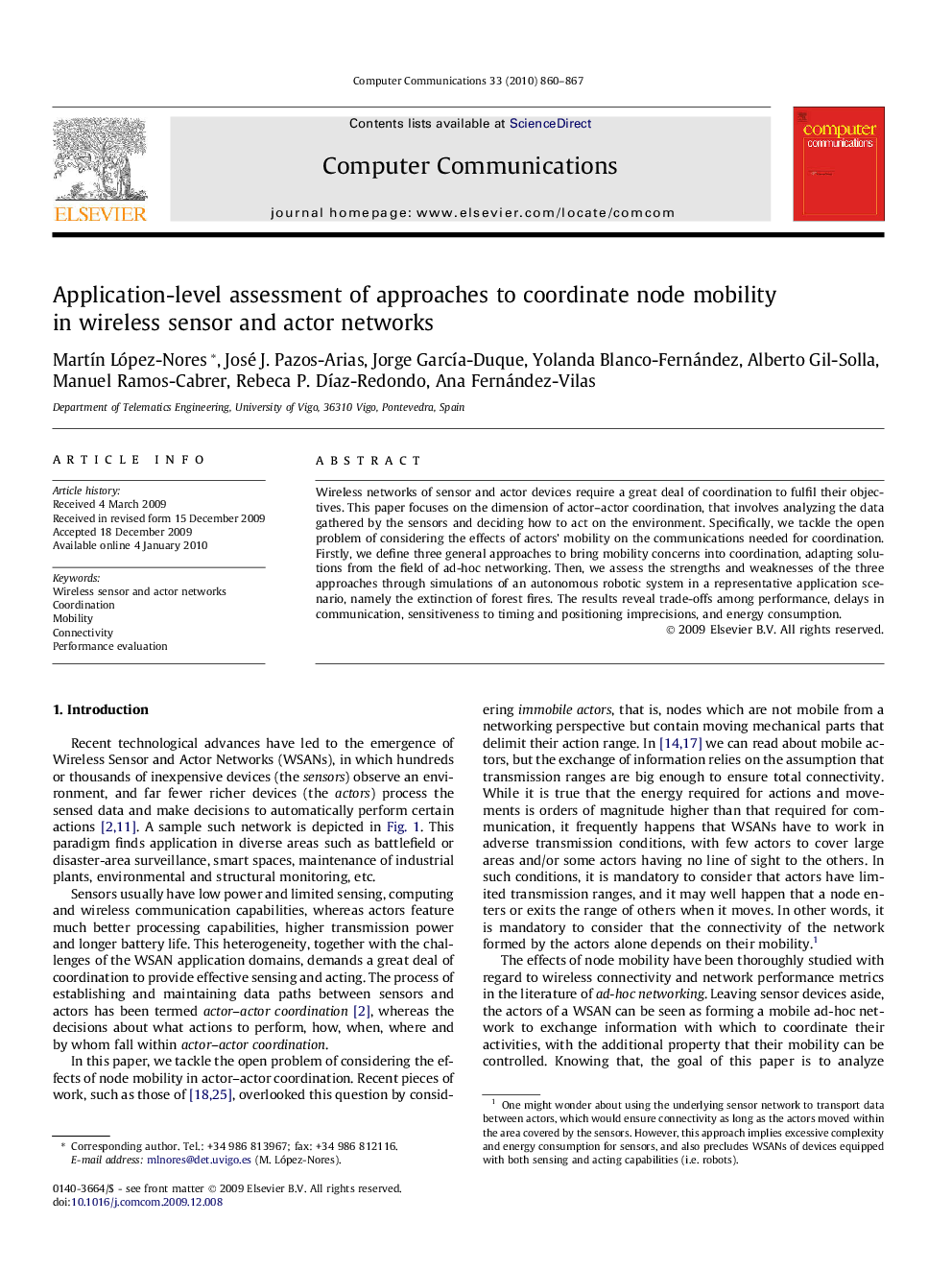| Article ID | Journal | Published Year | Pages | File Type |
|---|---|---|---|---|
| 450192 | Computer Communications | 2010 | 8 Pages |
Wireless networks of sensor and actor devices require a great deal of coordination to fulfil their objectives. This paper focuses on the dimension of actor–actor coordination, that involves analyzing the data gathered by the sensors and deciding how to act on the environment. Specifically, we tackle the open problem of considering the effects of actors’ mobility on the communications needed for coordination. Firstly, we define three general approaches to bring mobility concerns into coordination, adapting solutions from the field of ad-hoc networking. Then, we assess the strengths and weaknesses of the three approaches through simulations of an autonomous robotic system in a representative application scenario, namely the extinction of forest fires. The results reveal trade-offs among performance, delays in communication, sensitiveness to timing and positioning imprecisions, and energy consumption.
